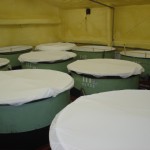The Various Grades of Sake
Here are the main sake types and their flavor profiles, plus several common sake terms that will help you to understand what kind of sake you are tasting or buying, and help you determine your own likes and dislikes.
There are four basic types of sake, and each requires a different brewing method. Naturally, there are other special brewing techniques that are less common, but the four basic sake types are:
- Junmai-shu (rice only; no adding of distilled alcohol)
- Honjozo-shu (a tad of distilled alcohol is added)
- Ginjo-shu (highly milled rice, with or without alcohol added)
- Daiginjo-shu (even more highly milled rice, with/without added alcohol)
- Nama-zake (refers to sake that is NOT pasteurized) and basically is mutually independent of the above four (Read in great depth about nama-zake here.)
These four combine to form what is known as Special Designation Sake, or “Tokutei Meishoshu.” Each of these has a general flavor profile based on the brewing methods employed. However, there is a whole lot of overlap between them. Very very often one cannot tell which type one is drinking,for some of these sake taste above their class (or just different) and others don’t live up to the billing (or are just different). So many things come into play — rice, water, skill of brewers — that it is next to impossible to isolate how a sake will taste based on which “type” it is, nor to fault it when it doesn’t fit the mold. Nonetheless, generalities can be useful. So enough with the disclaimers and let’s move on to our definitions:
Text Definitions
Junmai-shu: This can be translated as pure rice sake. Nothing is used in its production except rice, water, and koji, the magical mold that converts the starch in the rice into fermentable and non-fermentable sugars. Junmai-shu is made with rice that has been polished (milled) so that at least 30% of the outer portion of each rice grain has been ground away. The taste of junmai-shu is usually a bit heavier and fuller than other types, and the acidity is often a touch higher as well. Click here for flavor profile and further details on junmai.
Honjozo-shu: Honjozo is sake to which a very small amount of distilled ethyl alcohol (called brewers alcohol) has been added to the fermenting sake at the final stages of production. (Water is added later, so that the overall alcohol content does not change.) Honjozo, like Junmai-shu, is made with rice that has been polished (milled) so that at least 30% of the outer portion of each rice grain has been ground away. This, plus the addition of distilled alcohol, makes the sake lighter, sometimes a bit drier, and in the opinion of many, easier to drink. It also makes the fragrance of the sake more prominent. Honjozo often makes a good candidate for warm sake. Note that most run-of-the-mill cheap sake has an excessive amount of brewers alcohol added to it, which is not good. Honjozo has only a very small amount of added alcohol. Click here for flavor profile and further details on honjozo.
Ginjo-shu: This is sake made with rice that has been polished (milled) so that no more than 60% of its original size remains. In other words, at least the outer 40% has been ground away. This removes things like fats and proteins and other things that impede fermentation and cause off-flavors. But that is only the beginning: ginjo-shu is made in a very labor intensive way, fermented at colder temperatures for a longer period of time. The flavor is more complex and delicate, and both the flavor and the fragrance are often (but not always) fruity and flowery. Click here for flavor profile and further details on ginjo-shu.
Daiginjo-shu: Daiginjo-shu is ginjo-shu made with rice polished even more, so that no more than 50% of the original size of the grain remains. Some daiginjo is made with rice polished to as far as 35%, so that 65% is ground away before brewing. Daiginjo is made in even more painstaking ways, with even more labor intensive steps. Click here for flavor profile and further details on daiginjo-shu.
Junmai Ginjo and Junmai Daiginjo: Some ginjo-shu and daiginjo-shu are also junmai-shu. So a junmai ginjo-shu is a ginjo-shu with no added ethyl alcohol. If a ginjo or daiginjo is not labeled junmai, then the added alcohol is limited to the same small amounts as honjozo.
Namazake: Namazake is sake that has not been pasteurized. It should be stored cold, or the flavor and clarity could suffer. Namazake has a fresh, lively touch to the flavor. All types of sake (junmaishu, honjozo, ginjo-shu, and daiginjo-shu) can be namazake, or not. For more detailed information on nama-zake, go here.
Flavor Profiles
Honjozo-shu taste profile
Honjozo is sake wherein a small amount of distilled pure alcohol is added to smoothen and lighten the flavor, and to make the sake a bit more fragrant. Honjozo-shu, like Junmai-shu, must be made with rice with a Seimai Buai (degree of milling) of at least 70%. This is the number you will see on the label (if it is given at all), but what it means is that the rice has been polished so that no more than 70% of the original size of the grains remains. In other words, at least 30% of the outer portion of each rice grain has been ground away. Honjozo sake is often a bit lighter than other sake, due to the small amount of grain alcohol added at the end of the ferment. Remember that this is not a bad thing, in moderation, and brewers have been doing it for hundreds of years. It is NOT simply a cost cutting measure when used within the limits prescribed by honjozo. The flavor is lighter, and magically the fragrance becomes much more prominent. Below is a typical honjozo sake.
John’s Flavor Profile – Honjozo-shu
| Fragrance | none | ——————–X—— | fragrant |
| Impact | quiet | —–X——————— | explosive |
| Sweet/Dry | sweet | —–X——————— | dry |
| Acidity | soft | —-X———————- | puckering |
| Presence | unassuming | —-X———————- | full |
| Complexity | straightforward | ———————X—– | complex |
| Earthiness | delicate | ———————-X—- | dank |
| Tail | brief | ———————-X—- | pervasive |
Honjozo-shu in details
For centuries, adding distilled pure alcohol to sake just as it completes its fermentation has been a part of the brewers’ art. Often, it is used to “cut” the sake and get more yield out of a single batch. However, when a sake is labeled “honjozo,” it means that the amount of sake is very limited, like to 120 liters per metric ton of rice used. The term honjozo indirectly means “the original brewing method,” and indicates that this is the proper way to use such added alcohol, as opposed to tossing in copious amounts, dropping the price, dulling the flavor, and lowering the hangover threshold.
This will not increase the yield much if at all. But honjozo sake is often a bit drier, lower in acidity, less cloying and fragrant than pure sake (see junmaishu). Note that premium “ginjo” sake in Japan is automatically limited to this small amount of added alcohol. In other words, you can have junmai ginjo and honjozo ginjo, but the latter is not referred to as honjo ginjo, only ginjo. That alone distinguishes if from junmai ginjo. Ginjo means sake brewed with rice milled so that no more than 60% of the grain remains. Confused?
At present, any sake that is not junmai (i.e., any sake with any added distilled alcohol at all) is taxed by the US at distilled beverage rates, making it unfeasible to import and distribute it. This will hopefully change in the not-too-distant future, allowing more premium sake into the US.
Junmai-shu taste profile
Junmaishu refers to pure sake, pure in the sense that no adjuncts (starches or sugars other than rice added to the fermenting mixture) were used, and that no brewer’s alcohol was added either. Junmai-shu, like Honzojo-shu, must be made with rice with a Seimai Buai (degree of milling) of at least 70%. This is the number you will see on the label (if it is given at all), but what it means is that the rice has been polished so that no more than 70% of the original size of the grains remains. In other words, at least 30% of the outer portion of each rice grain has been ground away. Junmai often has a fuller, richer body and a higher-than-average acidity. The nose is often not as prominent as other types of sake, nor are other parameters dependent on whether a sake is a junmai or not. Here is a typical junmai-shu flavor profile.
John’s Flavor Profile – Junmai-shu
| Fragrance | none | —-X———————- | fragrant |
| Impact | quiet | ——————X——– | explosive |
| Sweet/Dry | sweet | ————-X————- | dry |
| Acidity | soft | ———————-X—- | puckering |
| Presence | unassuming | ———————-X—- | full |
| Complexity | straightforward | —-X———————- | complex |
| Earthiness | delicate | ————-X————- | dank |
| Tail | brief | ——————X——– | pervasive |
Junmai-shu in detail
The product is nothing more than a straight fermentation of rice with the help of koji-kin (a starch-dissolving mold). Junmaishu is similar in concept to beer made according to German beer regulations, which allow nothing but malted barley, hops and water to be used. Sake that does not have the word junmaishu on the label will usually have brewer’s alcohol added (not necessarily a bad thing, mind you, if done sparingly), as well as (in lower grade stuff) sugars, artificial flavorings, acid-based additives, and a whole host of other cost-saving, hangover-promoting nastiest. Do keep this in mind though — the idea that real sake drinkers drink only junmaishu is a fallacy. It is not necessarily what everyone prefers, nor does it imply that everything else is rotgut. Not by any stretch. Junmaishu generally is a tad more full and heavy in flavor than other types, and often the acidity is slightly higher as well. It is often a good choice for matching with food, as it makes its presence known a bit more assertively than lighter sake.
Ginjo-shu taste profile
Ginjo sake is much more delicate and light and complex than the above two. Why? The rice has had the outer 40% of the grains polished away, leaving the inner 60% left. This is opposed to leaving 70% for junnmai and honjozo. On top of that, special yeast, lower fermentation temperatures, and labor-intensive techniques make for fragrant, intricate brews. Here is a typical ginjo chart.
John’s Flavor Profile – Ginjo-shu
| Fragrance | none | ———————–X— | fragrant |
| Impact | quiet | ——-X——————- | explosive |
| Sweet/Dry | sweet | ——-X——————- | dry |
| Acidity | soft | ——X——————– | puckering |
| Presence | unassuming | ——X——————– | full |
| Complexity | straightforward | ———————–X— | complex |
| Earthiness | delicate | –X———————— | dank |
| Tail | brief | ——X——————– | pervasive |
Daiginjo-shu taste profile
Finally, there is daiginjo. This is fundamentally speaking an extension of daiginjo. The rice has been milled so that no more than 50% of the original size of the grains remains, although this often goes to 35%, and even more care has been taken to create sake representative of the pinnacle of the craft. Although there is a range of styles of daiginjo, and not all look like the chart below, here is a somewhat typical example.
John’s Flavor Profile – Daiginjo-shu
| Fragrance | none | ————————–X | fragrant |
| Impact | quiet | ———-X—————- | explosive |
| Sweet/Dry | sweet | ———-X—————- | dry |
| Acidity | soft | ——–X—————— | puckering |
| Presence | unassuming | ———————–X— | full |
| Complexity | straightforward | ————————–X | complex |
| Earthiness | delicate | ———-X—————- | dank |
| Tail | brief | -X————————- | pervasive |
Other Important Sake Terms
Nigori-zake: Sake that is unfiltered.
Seishu Seishu: The legal name for sake, differentiating it from other alcoholic beverages.
Futsuu-shu: Any sake that is not junmai-shu, honjozo, ginjo-shu or daiginjo.
Jizake Jizake: Vague term that usually means sake from smaller breweries out in the boonies; sake that is not mass-produced.
Seimai Buai (or Rice Milling)
Junmai-shu and Honjozo-shu must be made with rice with a Seimai Buai (degree of milling) of at least 70%. This is the number you will see on the label (if it is given at all), but what it means is that the rice has been polished so that no more than 70% of the original size of the grains remains. In other words, at least 30% of the outer portion of each rice grain has been ground away.
Ginjo-shu, whether Junmai Ginjo-sho or non-Junmai Ginjo (usually called aru-ten ginjo, one does not say Honjo Ginjo) must have a Seimai Buai of at least 60%, meaning that the outer 40% or more has been polished away.
Daiginjo and Junmai Daiginjo (same phraseology rules apply here) must be made with rice with a Seimai Buai of 50% or more, meaning at least the outer half has been ground away. Often, Daiginjo goes as far as a 35% Seimai Buai.
What happens to the powder (called nuka) that is ground away? It is often used in Japanese-style cakes, for livestock feed, and can also be fermented and distilled elsewhere in a separate process. Nothing is wasted.
Remember, adding alcohol does not make a sake lower grade; it is part of one manner of brewing that produces specific results (like lighter, more fragrant sake with a more robust structure and perhaps longer shelf life). There are junmai purists, but there are those who feel adding alcohol is the correct way to brew, as is indicated in old brewing texts. Avoid the hype!
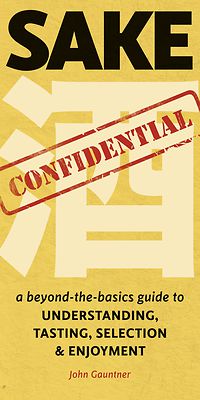 SAKE CONFIDENTAL
SAKE CONFIDENTAL
Interested in learning more about sake?
Check out my book “Sake Confidential” on Amazon.
Sake Confidential is the perfect FAQ for beginners, experts, and sommeliers.
Indexed for easy reference with suggested brands and label photos. Includes:
- Sake Secrets: junmai vs. non-junmai, namazake, aging, dry vs. sweet, ginjo, warm vs. chilled, nigori, water, yeast, rice, regionality
- How the Industry Really Works: pricing, contests, distribution, glassware, milling, food pairing
- The Brewer’s Art Revealed: koji-making, brewers’ guilds, grading
SAKE INDUSTRY NEWS
If you are interested in staying up to date with what is happening within the Sake Industry and also information on more advanced Sake topics then Sake Industry News is just for you!
Sake Industry News is a paid subscription newsletter that is sent on the first and 15th of each month. Get news from the sake industry in Japan – including trends, business news, changes and developments, and technical information on sake types and production methods that are well beyond the basics – sent right to your inbox. Subscribe here today!
Each issue will consist of four or five short stories culled from public news sources about the sake industry in Japan, as well as one or more slightly longer stories and observations by myself on trends, new developments, or changes within the sake industry in Japan.






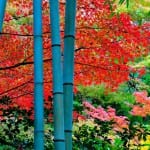

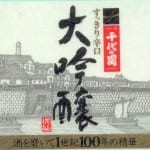



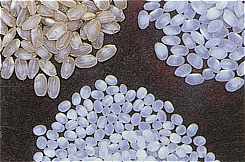



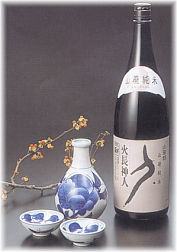 There is plenty of immensely enjoyable sake not in the top of the top classifications. In fact, sometimes such sake has more presence, uniqueness, and appeal than super dooper hoity toity high priced daiginjo. Well, sometimes, anyway. Top of PageSake is almost always fairly priced.
There is plenty of immensely enjoyable sake not in the top of the top classifications. In fact, sometimes such sake has more presence, uniqueness, and appeal than super dooper hoity toity high priced daiginjo. Well, sometimes, anyway. Top of PageSake is almost always fairly priced.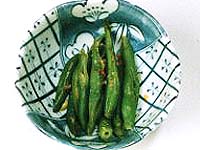 If you study the flavor profiles of sake from around Japan, you can easily see how well the local sake jibes with the original cuisine of the region. Sake from mountainous regions of Japan, like the Tohoku region in the north, is sturdier and more rice-laden in flavor, complementing well the salt-preserved and fermented flavors common in that region’s food. Sake from Shizuoka, Toyama and Miyagi are lighter and more supple, which works perfectly with the abundance of fresh fish found in these areas.
If you study the flavor profiles of sake from around Japan, you can easily see how well the local sake jibes with the original cuisine of the region. Sake from mountainous regions of Japan, like the Tohoku region in the north, is sturdier and more rice-laden in flavor, complementing well the salt-preserved and fermented flavors common in that region’s food. Sake from Shizuoka, Toyama and Miyagi are lighter and more supple, which works perfectly with the abundance of fresh fish found in these areas.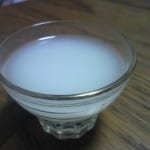
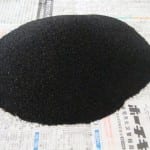
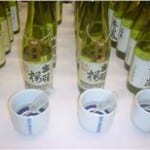

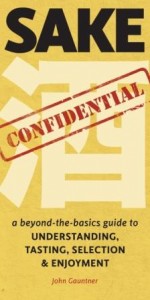
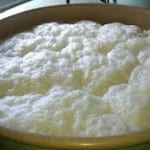
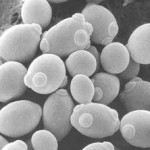 Back about 80 years ago when this organization was put together, they started to reproduce yeast that was known to be strong and predictable, and make it available to any brewer in the industry in little ampules. This helped ensure good sake, which led to good tax revenue. 😉
Back about 80 years ago when this organization was put together, they started to reproduce yeast that was known to be strong and predictable, and make it available to any brewer in the industry in little ampules. This helped ensure good sake, which led to good tax revenue. 😉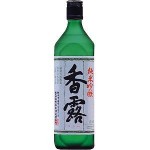 predecessors, it now may be giving Number 7 a run for the money in how commonly it is used.
predecessors, it now may be giving Number 7 a run for the money in how commonly it is used.

